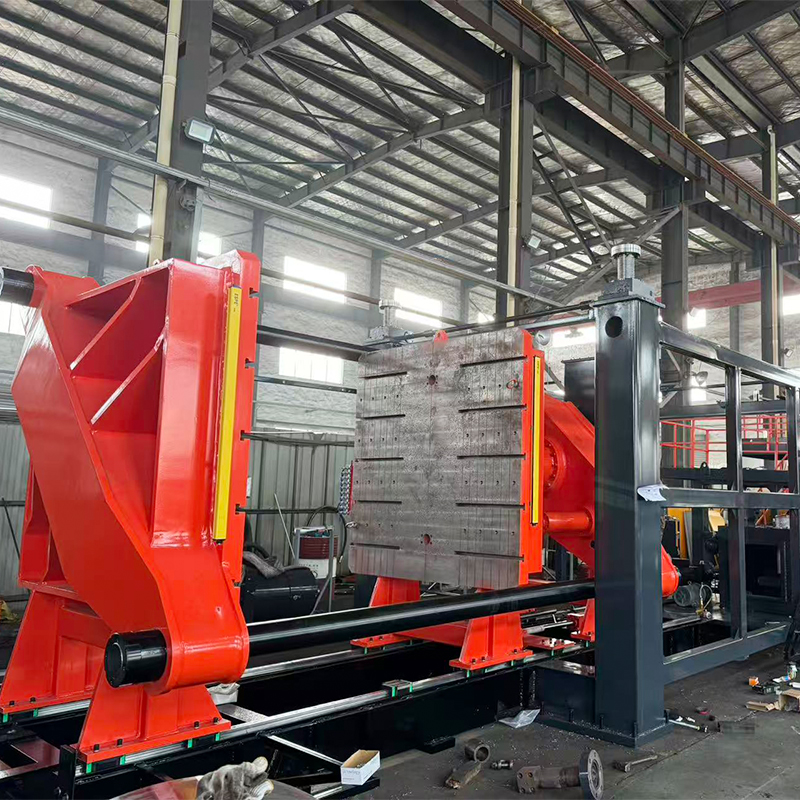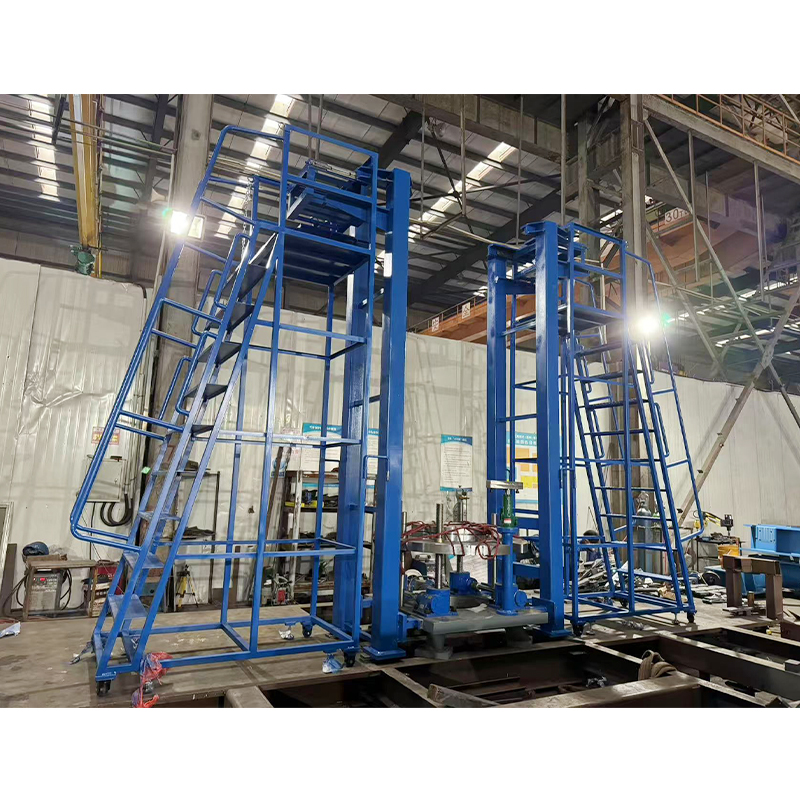How do wind power photovoltaic tooling tools ensure long-term stable ground resistance?
Release Time : 2025-09-11
In wind power and photovoltaic power generation systems, the grounding system is a critical component for ensuring equipment safety and preventing lightning damage and electric shock accidents. PV panel racks, inverter cabinets, wind turbine towers, and electrical equipment all require reliable grounding connections to the earth to quickly dissipate fault currents or lightning currents. The stability of the grounding resistance directly determines the effectiveness of the grounding system. If improper construction or inadequate tool performance leads to poor contact, oxidation corrosion, or a weak crimp, the grounding resistance will gradually increase over time, potentially causing equipment damage, system downtime, or even safety accidents. Therefore, dedicated wind power photovoltaic tooling tools are designed and used to ensure long-term low resistance and stability of the ground connection through standardized operating procedures, high-precision crimping technology, and durable material control.
1. Use specialized crimping tools to ensure the physical reliability of metal connections.
The conductivity of the grounding system depends on close contact between metals. Traditional bolted connections are prone to loosening due to vibration or oxidation, leading to increased contact resistance. However, modern wind and photovoltaic projects commonly utilize "crimping" connection technology, using specialized hydraulic or electric crimping pliers to cold-press copper terminals, grounding wires, and grounding electrodes. These tools, equipped with precision dies, are capable of applying constant and adjustable high pressure (up to 12 tons or more), causing plastic deformation between the copper sleeve, conductor, and grounding iron, forming a molecular-level metallurgical bond. This creates a contact area far greater than that achieved with mechanical connections, significantly reducing initial contact resistance. After crimping, the connection exhibits excellent tensile strength and vibration resistance, resisting loosening and ensuring long-term stability.
2. Die Standardization and Process Monitoring Eliminate Human Error
Different grounding cable specifications require corresponding crimping dies to avoid false connections caused by using a large die for a small wire or a small die for a large wire. Professional tools equipped with automatic die recognition systems or pressure sensor feedback ensure that each crimp is completed within preset parameters. Some smart crimping tools have built-in recording functions that store the number of crimps, pressure values, time, and location, enabling traceability of the construction process and facilitating quality inspection and subsequent maintenance. This standardized process effectively eliminates the inconsistencies associated with manual hammering or conventional crimping, ensuring grounding quality from the source.
3. Anti-corrosion Design Extends Connection Life
Wind farms are often located in coastal areas, saline-alkali land, or high-humidity environments. Photovoltaic power plants are also exposed to the sun and rain, making grounding points highly susceptible to electrochemical corrosion. Specialized tooling, combined with corrosion-resistant copper-aluminum transition terminals or tinned copper lugs, enhances corrosion resistance. After crimping, it is recommended to seal the connection with heat shrink tubing or anti-corrosion tape to isolate air and moisture and prevent the formation of an oxide layer. Some high-end crimping tools also support a double-pass crimping process, performing two staggered presses on the same connector to further improve density and water resistance. These measures together slow the corrosion process and maintain low resistance.
4. Supports dissimilar metal connections to prevent galvanic corrosion
PV systems often require connecting copper cables to aluminum brackets or galvanized steel grounding grids. The potential difference between the dissimilar metals can easily lead to galvanic corrosion. Specialized tooling tools utilize bimetallic copper-aluminum transition terminals. The internal copper-aluminum transition terminals are integrally formed using friction welding or explosion welding techniques, and then crimped externally to prevent direct contact between the two metals. Furthermore, the crimping pressure is specifically verified to prevent loosening due to differences in material expansion coefficients during long-term operation, thereby inhibiting corrosion and maintaining electrical conductivity.
5. Regular Testing and Maintenance Tool Kit
To ensure the long-term effectiveness of the grounding system, regular ground resistance testing is required during operation and maintenance. Dedicated ground resistance testers (such as three-pole or clamp meters) can quickly assess on-site conditions. If abnormal resistance values are detected, the accompanying repair kit allows for in-situ re-crimping or terminal replacement without disassembly, improving maintenance efficiency.
In summary, wind power photovoltaic tooling tools comprehensively guarantee the initial quality and long-term stability of ground connections through high-precision crimping, standardized operation, corrosion-resistant design, and intelligent monitoring. They are not only a construction method, but also the lifeline of system safety, ensuring that new energy power stations always have reliable grounding protection capabilities during their decades of service life.
1. Use specialized crimping tools to ensure the physical reliability of metal connections.
The conductivity of the grounding system depends on close contact between metals. Traditional bolted connections are prone to loosening due to vibration or oxidation, leading to increased contact resistance. However, modern wind and photovoltaic projects commonly utilize "crimping" connection technology, using specialized hydraulic or electric crimping pliers to cold-press copper terminals, grounding wires, and grounding electrodes. These tools, equipped with precision dies, are capable of applying constant and adjustable high pressure (up to 12 tons or more), causing plastic deformation between the copper sleeve, conductor, and grounding iron, forming a molecular-level metallurgical bond. This creates a contact area far greater than that achieved with mechanical connections, significantly reducing initial contact resistance. After crimping, the connection exhibits excellent tensile strength and vibration resistance, resisting loosening and ensuring long-term stability.
2. Die Standardization and Process Monitoring Eliminate Human Error
Different grounding cable specifications require corresponding crimping dies to avoid false connections caused by using a large die for a small wire or a small die for a large wire. Professional tools equipped with automatic die recognition systems or pressure sensor feedback ensure that each crimp is completed within preset parameters. Some smart crimping tools have built-in recording functions that store the number of crimps, pressure values, time, and location, enabling traceability of the construction process and facilitating quality inspection and subsequent maintenance. This standardized process effectively eliminates the inconsistencies associated with manual hammering or conventional crimping, ensuring grounding quality from the source.
3. Anti-corrosion Design Extends Connection Life
Wind farms are often located in coastal areas, saline-alkali land, or high-humidity environments. Photovoltaic power plants are also exposed to the sun and rain, making grounding points highly susceptible to electrochemical corrosion. Specialized tooling, combined with corrosion-resistant copper-aluminum transition terminals or tinned copper lugs, enhances corrosion resistance. After crimping, it is recommended to seal the connection with heat shrink tubing or anti-corrosion tape to isolate air and moisture and prevent the formation of an oxide layer. Some high-end crimping tools also support a double-pass crimping process, performing two staggered presses on the same connector to further improve density and water resistance. These measures together slow the corrosion process and maintain low resistance.
4. Supports dissimilar metal connections to prevent galvanic corrosion
PV systems often require connecting copper cables to aluminum brackets or galvanized steel grounding grids. The potential difference between the dissimilar metals can easily lead to galvanic corrosion. Specialized tooling tools utilize bimetallic copper-aluminum transition terminals. The internal copper-aluminum transition terminals are integrally formed using friction welding or explosion welding techniques, and then crimped externally to prevent direct contact between the two metals. Furthermore, the crimping pressure is specifically verified to prevent loosening due to differences in material expansion coefficients during long-term operation, thereby inhibiting corrosion and maintaining electrical conductivity.
5. Regular Testing and Maintenance Tool Kit
To ensure the long-term effectiveness of the grounding system, regular ground resistance testing is required during operation and maintenance. Dedicated ground resistance testers (such as three-pole or clamp meters) can quickly assess on-site conditions. If abnormal resistance values are detected, the accompanying repair kit allows for in-situ re-crimping or terminal replacement without disassembly, improving maintenance efficiency.
In summary, wind power photovoltaic tooling tools comprehensively guarantee the initial quality and long-term stability of ground connections through high-precision crimping, standardized operation, corrosion-resistant design, and intelligent monitoring. They are not only a construction method, but also the lifeline of system safety, ensuring that new energy power stations always have reliable grounding protection capabilities during their decades of service life.







